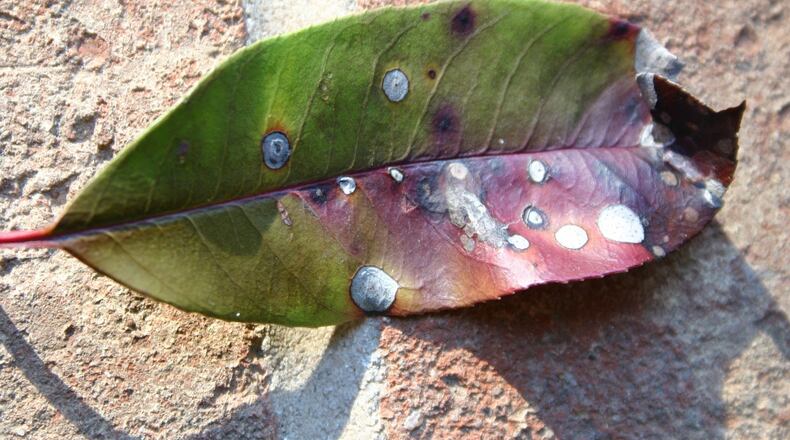Q: I saw a big healthy red tip photinia hedge outside the Royal Automoble Club in Epsom, England. If red tips will grow in England, why won't they grow in Atlanta? Willis Dobbs, email
A: Photinia will grow here fine, with regular maintenance. But 40 years ago lots of folks in the South were too lazy to care for them properly, and leaf spot disease wiped them out. Photinia leaf spot disease is present in England, too. But my guess is the professionals at the club are either spraying with fungicide or doing a terrific job raking and disposing of diseased leaves as soon as they fall. If you're willing to do the work, you can grow red tip photinia successfully in your landscape in Atlanta.
Q: I rooted an oakleaf hydrangea from an outdoor plant. It is doing well: growing and throwing out new leaves. What care would you suggest for the winter? Buzz Hope, Dunwoody
A: You can plant it in a sunny spot outdoors but the stems need protection from winter wind. Get a cheap wire tomato cage and cut it in half in the middle, making two short cages with legs. Place one of them over your cutting and completely cover with cheesecloth or a piece of bedsheet. The cutting will get sunshine but won't dry out on a cold windy day.
Q: Is there a good method to kill privet hedge? It has taken over a portion of my backyard fence. Don Greene, Acworth
A: It's a tough plant! I spent much of my childhood and young teen years trying to control privet on my family's farm. My father and I pulled hundreds of head-high plants using a small tractor and a chain. However, I would have to admit that there is just as much privet on the property now as there was 50 years ago. If you don't have a tractor or a teenager, the easiest control is to spray the green leaves with triclopyr (Brush Killer). If the lower trunk of the privet is more than an inch in diameter, chop into the base with a small hatchet and spray herbicide into the fresh cut. Do this before the leaves drop in fall and you won't have to deal with this nuisance plant a half-century later.
Q: I have two bare spots in my bermuda lawn where ant mounds have disappeared and a third hill that's still active. What do I do with the hills? Alicia Young, email
A: Dilute a liquid lawn insecticide according to label directions and pour a pint into the mound. This will usually kill all the ants within. You can then plant three-inch diameter plugs of bermuda grass into the bare spots. It's usually easy to find places where the grass has overgrown the edge of a sidewalk or driveway. You can dig out the plugs there. I am guessing these were fire ant hills. Make a note to treat the lawn with fire ant bait (Amdro, etc) next May to poison small mounds you don't see now.
About the Author
Keep Reading
The Latest
Featured



